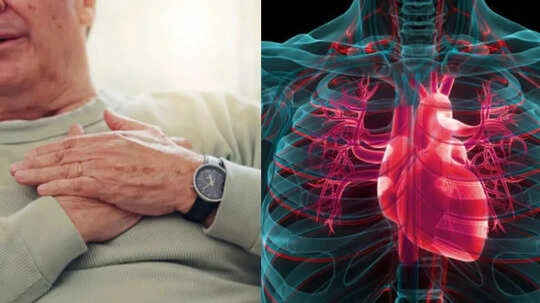A silent heart rhythm disorder is putting more seniors at risk of repeated strokes than ever before. According to experts, the aged citizens population in India and their lifestyle-related conditions are setting them at risk way earlier than they used to be.
And so, the focus should be more on early detection, timely treatment, and procedures like Left Atrial Appendage, or LAA, closure to make all the difference.
A hidden heart rhythm that strikes the brain
Dr Karthik Vasudevan, Chief of Interventional Cardiology and Heart Failure, Manipal Hospital, told Times Now that many patients are unaware that an irregular heartbeat – also known as atrial fibrillation, or AF – can silently pave the way for recurrent stroke. “AF causes the upper chambers of the heart to quiver instead of beating in rhythm. Blood can stagnate in a small pouch called the left atrial appendage, form clots, and, without warning, those clots may travel to the brain and block blood flow,” he said.
Why is it a growing concern?
According to Dr Vasudevan, the ageing population in India and its lifestyle-related conditions, which include high blood pressure, diabetes, and coronary artery disease, are driving a steady rise in AF. “Blood thinners remain the first line of defense, but for some patients the risk persists despite strict medication,” he added. That is when swift diagnosis and enhanced treatment are needed.
Recognizing the signs
Stroke symptoms frequently arise unexpectedly and lead to:
- Severe chest pain
- Dizziness
- Loss of balance
- Vomiting and nausea
- Slurred speech
- Weakness on one side of the body or a feeling of paralysis.
These signs indicate quick emergency treatment. Minutes count when the brain’s blood supply is inadequate.
A case of an elderly patient with AF
Seventy-two-year-old Sampath Rai (name changed) was admitted to the hospital after experiencing dizziness and vomiting. Multiple acute infarctions were seen on brain imaging, indicating that numerous tiny regions of brain tissue had been injured due to a sudden loss of blood flow. Despite using blood thinners, Rai’s medical history indicated that he had had many ischemic strokes earlier. He was also suffering from diabetes, high blood pressure, coronary artery disease with a prior bypass surgery, and chronic AF, a combination that placed him at very high risk. Without further action, another stroke was almost inevitable.
“However, after careful evaluation, our team performed a Left Atrial Appendage (LAA) Device Closure, a minimally invasive procedure that seals off the heart’s small pouch where clots tend to form. This approach provides long-term stroke protection when blood thinners alone are not enough,” said Dr Vasudevan. The procedure was smooth, and after ICU observation, physiotherapy, and swallow therapy, Rai was able to return home in stable condition.
Ways to stay safe
You must get your heart rhythm tested, as screenings are necessary for those with diabetes, high blood pressure, or heart disease.
- Promptly seek medical assistance if you have sudden lightheadedness, abnormal speech, or visual issues.
- Blood thinners and heart rate medications are most effective when taken exactly as prescribed by your doctor.
- Even if you feel good, frequent checkups can detect atrial fibrillation (AF) before it creates problems. Thus, frequent consultation with the doctor is advisable.
